Tutorial Session 4
16. Thermal Effects (Part II)
Björn Bukkems
Björn Bukkems holds an MSc and PhD degree in mechanical engineering, both from Eindhoven University of Technology. After having finished his PhD, he started working at ASML where he worked in several roles and on various systems (e.g. wafer stage and EUV source). Since 2015, Björn is working at MI-Partners where he currently holds the position of project manager and team leader.
Contact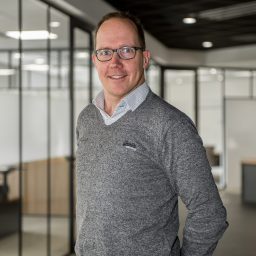
Walter Aarden
Walter Aarden holds MSc degrees in Applied Physics and Mechanical Engineering, both from Eindhoven University of Technology. He has worked in the high-tech industry for over 15 years, including 8 years at Philips Innovation Services, and since 2017 at MI-Partners. Over his career, he has contributed to a wide range of systems, such as ASML stages and metro frames, Zeiss 3FM, and Bosch Rexroth ctrlX FLOW HS, in various technical roles. He currently holds the role as a Mechatronic Systems Architect and leads the Thermal Competence Group.
Contact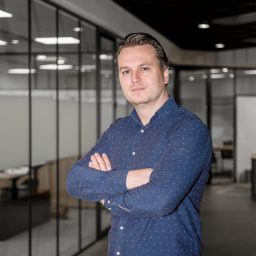
Tutorial Overview
Thermal effects are one of the main error sources in precision equipment. The last decades huge improvements have been reached by understanding and controlling these thermal effects and a significant amount of knowledge has been gained. The tutorial will present the state of the art status about thermal design methodology and modelling.
17. Opto-Mechanical Engineering (Part II)
Lennino Cacace is a senior opto‑mechatronic system architect in the high‑tech sector, specializing in semiconductor equipment and scientific instrumentation. He is also an assistant professor at Eindhoven University of Technology, where he leads the Opto‑Mechatronics group, and he is responsible for the Dutch Society for Precision Engineering’s industry course Opto‑Mechanical System Design. With expertise spanning optical design, precision mechanisms, metrology, and systems engineering, he focuses on achieving overall optimal system performance across disciplines. His professional interests include system architecture, semiconductor equipment, distance metrology, 3D‑printed opto‑mechanics, sub‑nanometer stability, and thermo‑optical effects in high‑power optical systems.
Contact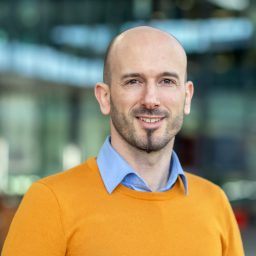
Tutorial Overview
Alignment mechanisms are treated at the start of the second session and are essential when alignment tolerances exceed manufacturing capabilities. After successful alignment, these mechanisms must maintain the required positioning during operation. Their key functions, guidance, adjustment, and locking, are discussed, followed by an overview of standard off‑the‑shelf Opto‑Mechanical mechanisms and custom‑designed solutions.
Learning objectives
Measurement of alignment is essential when alignment mechanisms are needed, since the target position and/or orientation for the alignment process must be established during alignment. Many advanced measurement techniques exist that measure wavefront or optical performance directly while aligning optics relative to each other. These techniques will be briefly mentioned, however, here we focus on practical techniques that do not require expensive equipment and that allow alignment of optical and mechanical axes using simple apertures, detectors, and rotational checks. Examples include fiber collimator alignment, laser‑to‑stage alignment, and laser‑to‑mechanical‑axis alignment.
Thermal stability and athermalization concludes the program. Topics include exact‑constraint design, the role of material properties, passive thermal compensation, and thermal centers. These strategies ensure that precision optical systems maintain alignment and that performance remains stable over operational temperature ranges.
Across both sessions, the tutorial aims at providing a clear, methodical framework for translating optical performance requirements into robust and thermally stable Opto‑Mechanical designs.
For More Info on the Tutorial, Find the Attachment HERE!
18. Human Interaction Issues in High Tech Development Environments
Jelm Franse
Jelm Franse recently retired from ASML where he led various development departments since 2010. He has been working for 40 + years in various companies on the development of High Tech Systems and consumer products. He is now active as Managing Partner and Co-Founder of FFSS B.V. focusing on helping professionals to develop their technical leadership by providing courses and mentoring. Jelm obtained an MSc from Technical University Delft and a PhD from Technical University Eindhoven.
Contact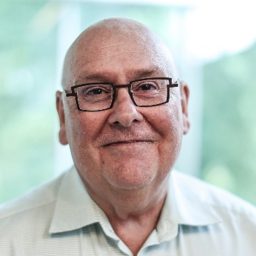
Jaco Friedrich
Jaco Friedrich has trained thousands of engineers across Europe and the US. Using straightforward language, he helps engineers find their way through the many challenges they face in their daily work. With 20+ years of experience as a trainer and a background in civil engineering and psychology, Friedrich intuitively understands what engineers need. He provides no-nonsense, practical advice about leadership and communication that has proven useful to engineers worldwide. He is a partner of Friedrich Franse Settels & Savenije, partner in coaching and training in personal skills and innovative leadership. He is author of the book ‘Leadership skills for engineers’.
Contact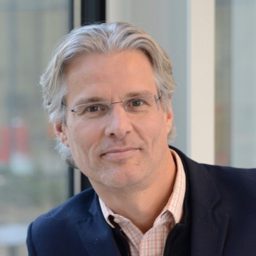
Tutorial Overview
The multi-disciplinary nature and high innovation rate in high-tech industries requires flexibility and the ability to adapt and change the way we organise and execute work, communicate, innovate and interact with internal and external parties. This also brings unique human interaction challenges. The goal of this short course is to help the participants recognise and deal with the most common of these issues to prevent that they have to go through the same, often painful experiences the authors have seen many times in business practice.
Learning objectives
- Discuss common human interaction challenges in high-tech workplaces and how to deal with them.
- Understand the impact of characters, communication styles, cultural diversity, stakeholder interest on team dynamics and interactions with stakeholders, including career propelling and limiting moves.
- Develop skills for effective delegation, conflict management, feedback, and constructive dialogue
- Learn practical strategies to build trust, influence stakeholders, improve team performance
Course Format
The teachers, combine extensive experience in high tech development practice (Jelm Franse) and Psychological and human interaction knowledge (Jaco Friedrich, author of “Leadership skills for engineers”).
To start off, the teachers will introduce themselves to give the participants an idea of their work experience. Next a brief intake will be done to let the participants get to know each other a bit and give them the opportunity to indicate their personal learning goals and dilemma’s they experience in their work environment.
The teachers will discuss with the participants examples of such dilemmas and how they dealt with them from their own experiences and present applicable professional advice for the participants to be able to use them in their work. The participants will also exercise with some of the proposed solutions.
Finally, the participants can ask the teachers any questions they may had in addition to those addressed and tap into the experience of the teachers for practical tips on.
19. Actuators for Precision Engineering
Lei Zhou
Lei Zhou is an Assistant Professor jointed appointed in the ME and ECE departments at the University of Wisconsin-Madison, and serves as an Associate Director of the Wisconsin Electric Machines and Power Electronics Consortium (WEMPEC). She received her Ph.D. in Mechanical Engineering from the Massachusetts Institute of Technology (MIT) in 2019 under the supervision of Prof. David Trumper. Her research interests include the design and control of high-performance electromechanical systems, magnetically levitated positioning systems, actuators for robots, and electric machines for transportation electrification.
Contact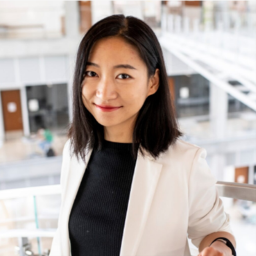
David L. Trumper
David L. Trumper joined the MIT Department of Mechanical Engineering in August 1993, and holds the rank of Professor. He received the B.S., M.S., and Ph.D. degrees from MIT in Electrical Engineering and Computer Science, in 1980, 1984, and 1990, respectively. Professor Trumper’s research centers on the design of precision mechatronic systems, in topics including precision motion control, high-performance manufacturing equipment, novel measurement instruments, biomedical and bioinstrumentation devices, and high-precision magnetic suspensions and bearings. He is a member of the IEEE, ASME, and ASPE (past President).
Contact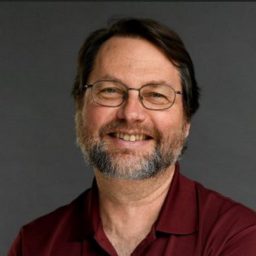
Tutorial Overview
This tutorial presents engineering principles for understanding the use of actuators and sensors in precision systems, as well as how to interconnect these devices with supporting electronics. The topics covered include: actuator principles, scaling laws, and physical limits; sensor principles and performance; linear and rotary motors, brushless DC motors and commutation, stepper motors, induction motors; linear- and switching-type amplifiers; when to use linear amplifiers; noise control via proper switching amplifier interfacing; low-level amplifiers, differential amplifiers, grounding and shielding; and the effect of mechanical design choices on system performance.
Learning objectives
Details of brushless motors operation, commutation, and control are presented in detail. Case studies provide context. The tutorial is intended for practicing engineers responsible for actuation, sensing, and control in precision mechatronic systems.
20. Practical Aspects of Diamond Turning Tutorial
Joseph Owen, Ph.D., is a Principal Process Engineer at Raytheon Technologies. Joseph joined the world of precision engineering in 2010 when Dr. Matthew Davies invited him to join his diamond machining research group as an undergraduate research assistant. Joseph’s main area of interest is manufacturing freeform optics, most often by diamond machining. In 2011, Joseph attended his first ASPE event, the Spring Topical Meeting on Structured and Freeform Surfaces. Joseph has enjoyed sharing and gaining knowledge from some of the most respected members in the fields of precision engineering, manufacturing, and optics at conferences like CIRP, OSA and SPIE’s Optifab. While in graduate school, Joseph had the privilege to work for a micro-optics company, DigitalOptics Corp, where he continued his training in diamond machining, metrology, and process development/improvement. In 2014, he returned to UNC Charlotte as a research assistant to complete his Doctorate under the direction of Dr. Matthew Davies with much influence from Dr. Chris Evans. His research during this time focused on cutting mechanics of diamond machining of brittle materials, toolpath design and tool and machine error correction methodologies. After spending 4 additional years at UNC Charlotte as an Assistant Research Professor developing processes for the Center for Freeform Optics and various optics companies, Joseph connected with John Schaefer and was hired by Raytheon in Richardson, Texas in 2019. At Raytheon, he has expanded his freeform optics knowledge in the areas of high precision optics production, freeform metrology and surface quality. In 2021, Joseph Owen and Jay Udayasankaran co-hosted the 2021 Spring Topical Meeting on Structured and Freeform Surfaces.
Contact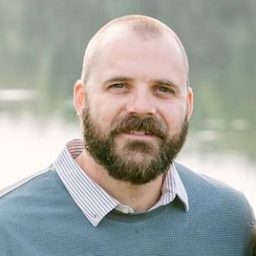
Tutorial Overview
Diamond turning is an essential manufacturing process used in direct machining of optical surfaces in many areas of photonics. A few examples include: infrared optics (both commercial and defense), plastic injection mold inserts, and mirrors (spectrometers, telescopes, satellite, etc.).
Learning objectives
- History of machine tools on the way to ultra-precision
- Enabling machine tool technologies
- Machine configurations
- 2-axis turning, slow and fast tool servo, flycutting and milling
- Machine errors
- Machine tool companies
- Diamond tool basics
- Single crystal and polycrystalline
- Geometry
- Suppliers
- Diamond Turning materials
- Metals (D-shell electron phenomena)
- Brittle materials: Crystals, IR glasses, ceramics
- Machining parameters
- Feed rates, depth of cuts, spindle speeds
- Typical roughing and finishing
- Surface finish
- Cutting fluids
- Basics of optical prescriptions
- Tool path generation software
- Metrology
- Form and finish
- Advanced diamond machining
- High speed machining
- Ultra-sonic
- Laser assisted

